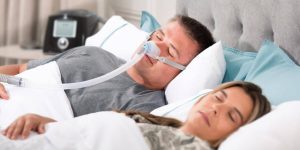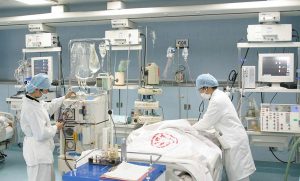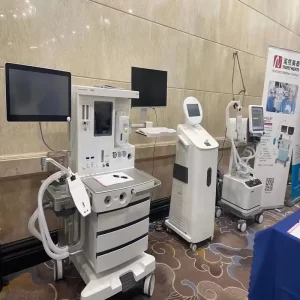In the medical field, ventilators and anesthesia machines are indispensable equipment, and they play an important role in the operation and treatment process. However, when using ventilators and anesthesia machines, we must be aware of the possible risk of infection.
Risk of Infection During Ventilator Use
As a key device to support the breathing of patients, the ventilator has a certain risk of infection during its use. The main risk sources and pathways include:
Contamination inside the ventilator: The internal components and tubing of the ventilator can harbor bacteria, fungi, and other pathogens and act as a source of contamination.
Airway-related infection: The ventilator is in direct contact with the patient's airway, and there is a risk of bacterial cross-infection. Bacteria in a patient's airway secretions, mouth and throat can be spread to other patients or healthcare workers through the ventilator.

Precautions when using a ventilator
To reduce the risk of infection when using a ventilator, the following precautions should be taken seriously:
Regular cleaning and disinfection: Ventilators should be thoroughly cleaned and disinfected on a regular basis to remove contaminants and pathogens. Use appropriate cleaners and disinfectants, following the manufacturer's directions.
Strictly follow hand hygiene and aseptic operation: Medical personnel should follow strict hand hygiene measures when operating the ventilator, including washing hands, wearing gloves and using disinfectants. In addition, during intubation and airway management, aseptic techniques should be used to reduce the risk of bacterial cross-infection.
Use single-use equipment: Use single-use ventilator-related equipment as much as possible, such as breathing tubes, masks, etc., to avoid repeated use of equipment that may cause infection.
Infection risks when using anesthesia machines
Similar to ventilators, anesthesia machines also have the risk of infection during use. The following are some of the main sources and routes of infection risk:
Internal contamination of the anesthesia machine: The waterways and pipes in the anesthesia machine may become a breeding ground for bacteria and viruses. Anesthesia machines that are not properly cleaned and disinfected can be a source of infection.
Contact between the patient and the anesthesia machine: the anesthesia machine is in direct contact with the patient, and there is a risk of cross-infection. Bacteria may be present on the patient's skin and mucous membranes, and through contact with the anesthesia machine, these bacteria may be transmitted to other patients or healthcare workers.

Precautions when using an anesthesia machine
To reduce the risk of infection when using anesthesia machines, the following precautions should be taken:
Regular cleaning and disinfection: The anesthesia machine should be thoroughly cleaned and disinfected regularly, especially the internal waterways and pipelines. Follow the manufacturer's directions for use of appropriate cleaners and disinfectants.
Strictly follow aseptic operation: During the operation of anesthesia machine, medical staff should adopt aseptic operation, including washing hands, wearing gloves, using sterile towels and instruments, etc. Ensure that the contact between the anesthesia machine and the patient is sterile, reducing the risk of cross-infection.
Regular inspection of patients: For patients who use anesthesia machine for a long time, regular skin and mucous membrane inspection should be carried out to detect and deal with possible sources of infection in time.
after the event remedy
If a risk of infection is identified during use of a ventilator or anesthesia machine, the following measures can be used as a remedy:
Replace and dispose of contaminated equipment in a timely manner: Once contamination or infection risk of ventilator or anesthesia equipment is found, it should be replaced immediately and properly disposed of.
Strengthen infection control and monitoring: Strengthen infection control measures, such as regular monitoring of the disinfection effect of ventilators and anesthesia machines, and strengthen infection monitoring of patients and medical staff so that necessary measures can be taken in a timely manner.
Professional internal disinfection equipment: The use of professional internal disinfection equipment can make the use environment of anesthesia machines and other equipment safer and more secure.

in conclusion
When using ventilators and anesthesia machines in medical institutions, we must be aware of possible infection risks and take appropriate preventive and post-event remedial measures. Regular cleaning and disinfection of equipment, strict adherence to hand hygiene and aseptic procedures, use of single-use instruments, and enhanced infection control and monitoring are all key steps to reduce the risk of infection in ventilators and anesthesia machines. Through scientific and effective preventive measures, we can ensure the safety of patients and medical staff, and improve the infection control level of medical institutions.